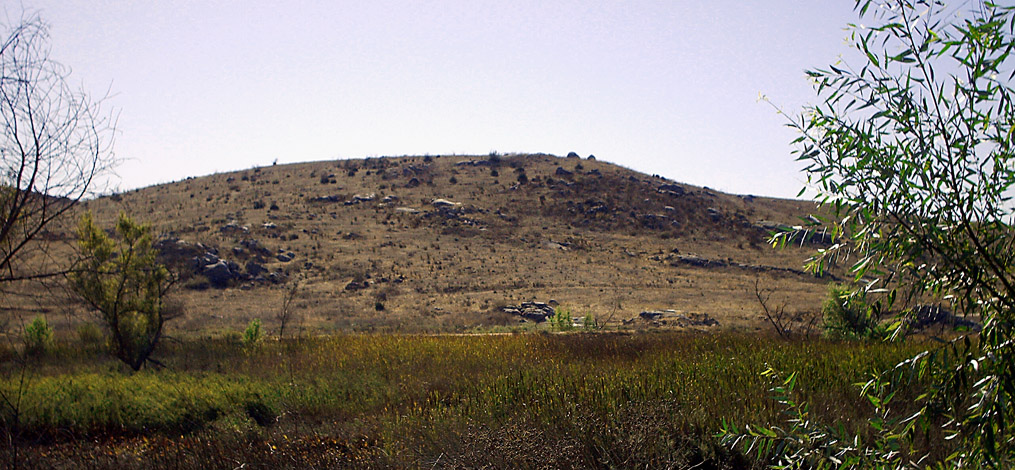“A large band of sheep passed over Poway grade last week, and in consequence the road bed is liberally ballasted with loose stone, to the discomfort of wheelmen and other travelers.”
Poway Progress, August 3, 1895 (Note:”wheelmen” refers to bicyclists.)
Yes, there was a time when traffic jams on the Poway Grade consisted of livestock rather than cars.
In an earlier entry I wrote about Andy Kirkham, a hard working farmer who was also an amateur historian and chronicler of his community, Poway Valley from the late 19th to the mid-20th centuries. He kept journals throughout his life which he later compiled into manuscripts donated to the archives of the Poway Historical and Memorial Society.
One of those journals described the time in 1898 when 14-year-old Andy joined his father and brother clearing the Poway Grade’s road bed of loose rocks in the wake of a large flock of sheep.
“Whenever a flock of sheep drove down the Poway grade, there would be a lot of rocks rolled down onto the road,” wrote Kirkham. “These flocks would be driven to the northern part of the county in the springtime and return in the fall.”
“It was a full day’s work for father and two of us kids to rake the rocks off the road bed for which the county road department paid three dollars.”
The flocks consisted of anywhere from 500 to 1,000 head, according to Kirkham. And it wasn’t just sheep. There were horse and cattle drives of similar size as well, and Sylvester Mendenhall, who ranched on Palomar Mountain, “would drive hogs on foot to the slaughter yard at Old Town,” wrote Andy.
Kirkham also participated in some of those drives. He described an annual cattle drive from the Poway Valley “to the slaughter yard on the mud flats between old San Diego and the San Diego Bay.” A butcher would come from the city, “spending three or four days, going from one ranch to the other picking out the animals he wanted delivered” down to the yard.
“This was one of the biggest events of the year,” wrote Andy. “Everyone, old and young, men and women, helped to round up the herd.”
It took two days to get all the cattle in one corral. Then, starting out just before dawn, the ranchers would begin driving the cows toward the city.
“It would be afternoon before we’d reach the top of the Poway Grade,” wrote Andy. “From there on, all had to herd them down the road. We had fresh horses from this point and by sundown we had them in the slaughter yard. By the time we had a couple hours rest, we were on our way home.”
______________
Get Updates Automatically-Become A Follower of the San Diego History Seeker
You can get weekly updates of San Diego History Seeker automatically in your email by clicking on the “Follow” button in the lower right corner of the blog page. You’ll then get an email asking you to confirm. Once you confirm you’ll be an active follower.

Asking for clarification here. Based on several journals that I have read regarding Poway and “the grade”; this phrase in your column is referring to the portion of Poway Road on the west side of the valley as it used to climb toward Scripps Ranch, and not the current location at the east end of the valley as it climbs to highway 67?
Yes it refers to the former road, not the current road, but the road in question was not Poway Road but Pomerado Road, according to discussions I’ve had with members of the Poway Historical and Memorial Society.
Thanks for your comment.
Thank you! I did mean Pomerado. I did have the dubious pleasure of driving the old grade when I first got married and moved to Poway. Perhaps you could do an article on the old road from Powa
I meant to say – I am curious about the road used to go to Ramona (not Mussey Grade) off the east end of Poway. I’ve seen pictures of it, but can’t fathom how one got out of Poway Valley and past Mount Woodson.